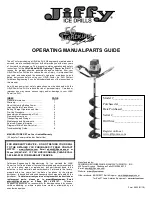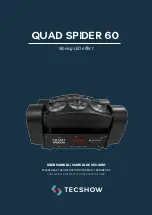
34
HC 920 • HC 940 • HC 960
GB
General view of application
Description of unit
2.2
Coating materials
Processible coating materials
i
Pay attention to the Airless quality of the coating
materials to be processed.
Dilutable lacquers and paints or those containing solvents, primer
and filler, synthetic-resin paints, acrylics, epoxies, latex paints,
reactant paints, dispersion paints, fire protection and thick film
materials, zinc dust and micaceous iron ore paints, Airless spray
primer, sprayable glue and bitumen-like coating materials.
No other materials should be used for spraying without
WAGNER’s approval.
HC 940-SSP
With suitable accessories, especially for working with airless
spray primer.
HC 960-SSP
Especially suited to working with airless spray primer directly
from the container (see accessories).
Filtering
In spite of the high-pressure filter, filtering of the coating material
is to be recommended in general.
Stir coating material before commencement of work.
i
Make sure when stirring with motor-driven
agitators that no air bubbles are stirred in. Air
bubbles disturb when spraying and can, in fact,
lead to interruption of operation.
Viscosity
It is possible to work with high-viscosity coating materials with the
devices.
If highly viscous coating materials cannot be sucked up, they
must be diluted in accordance with the manufacturer’s instruction.
Two-component coating material
The appropriate processing time must be adhered to exactly.
Within this time rinse through and clean the unit meticulously with
the appropriate cleaning agents.
Coating materials with sharp-edged additional
materials
These have a strong wear and tear effect on valves, high-
pressure hose, spray gun and tip. The durability of these parts
can be reduced appreciably through this.
3.
Description of unit
3.1
Airless process
The main area of application are thick layers of highly viscous
coating material for large areas and a high consumption of
material.
A piston pump takes in the coating material by suction and
conveys it to the tip. Pressed through the tip at a pressure of
up to a maximum of 228 bar (22.8 MPa), the coating material
is atomised. This high pressure has the effect of micro fine
atomisation of the coating material.
As no air is used in this process, it is described as an AIRLESS
process.
This method of spraying has the advantages of finest
atomisation, cloudless operation and a smooth, bubble-free
surface. As well as these, the advantages of the speed of work
and convenience must be mentioned.
3.2
Functioning of the unit
The following section contains a brief description of the technical
construction for better understanding of the function.
WAGNER HC 920 • 940 • 960 are high-pressure spraying units
driven by either a gasoline engine or electric motor.
The gasoline engine or electric motor (fig. 2, item 1) drives the
hydraulic pump (3) by means of a V-belt which is under the belt
cover (2). Hydraulic oil flows to the hydraulic motor (4) and then
moves the piston up and down in the material feed pump (5).
With devices HC 940-SSP and HC 960-SSP, the piston in the
material feed pump moves a shovel valve (6). The shovel valve
feeds high-viscosity coating materials.
The inlet valve is opened automatically by the upwards
movement of the piston. The outlet valve is opened when the
piston moves downward.
The coating material flows under high pressure through the high-
pressure hose to the spray gun. When the coating material exits
from the tip it atomises.
The pressure control valve (7) controls the volume and the
operating pressure of the coating material.
1
6
7
3
4
5
2
















































